Tomb of King Muryeong
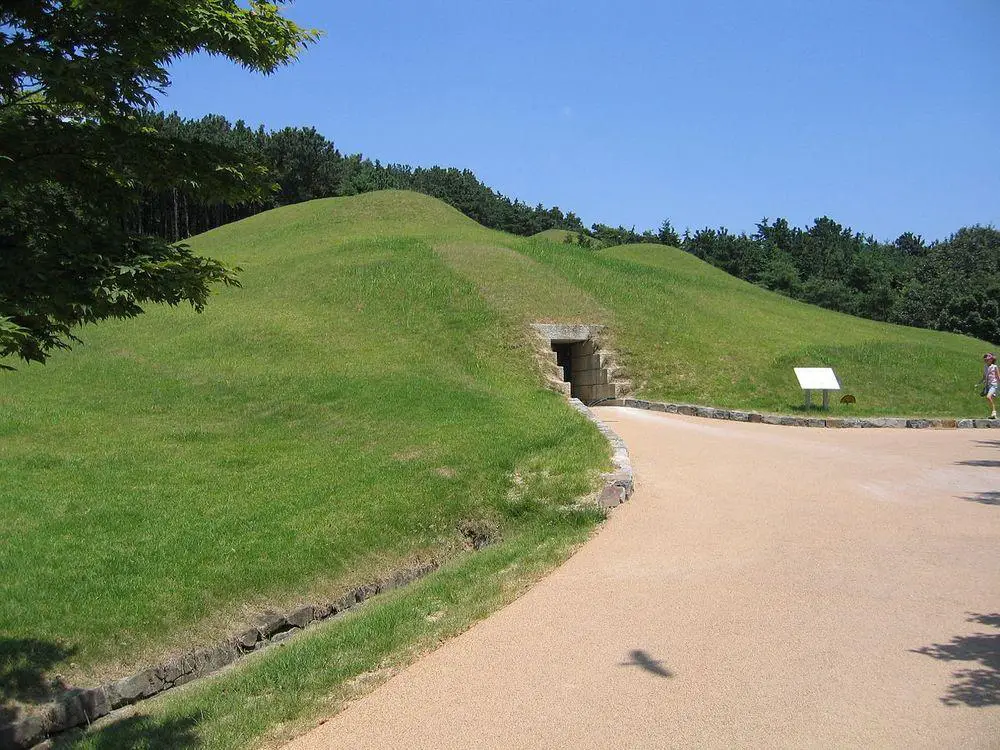
Burial of the ruler of Baekje Kingdom in 501 – 523 AD. This tomb was found intact and has been one of the most interesting archaeological discoveries in the history of South Korea.
Haman tumuli (Malisan tumuli)
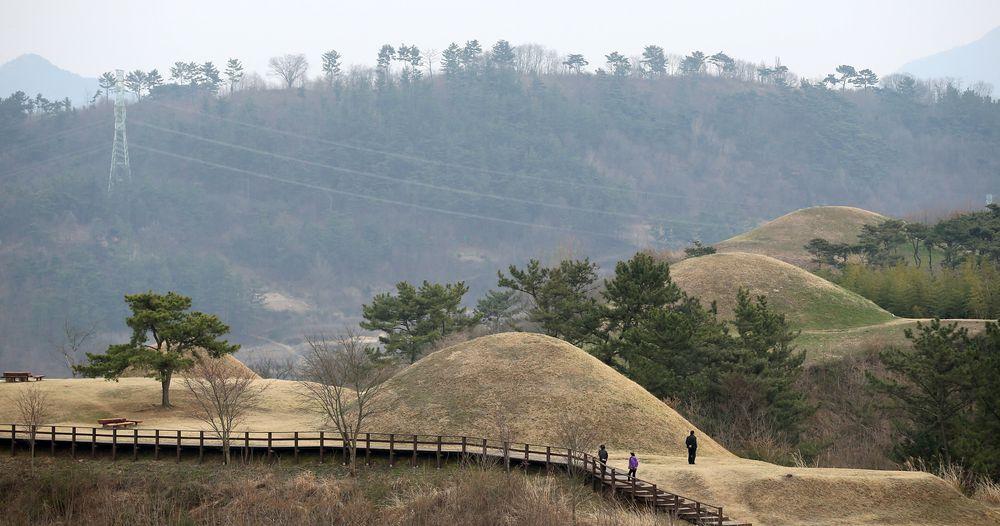
Hundreds of smaller and larger burial mounds – burials of the kings and nobleman of Gaya state.
Goryeong Jisandong Tumuli
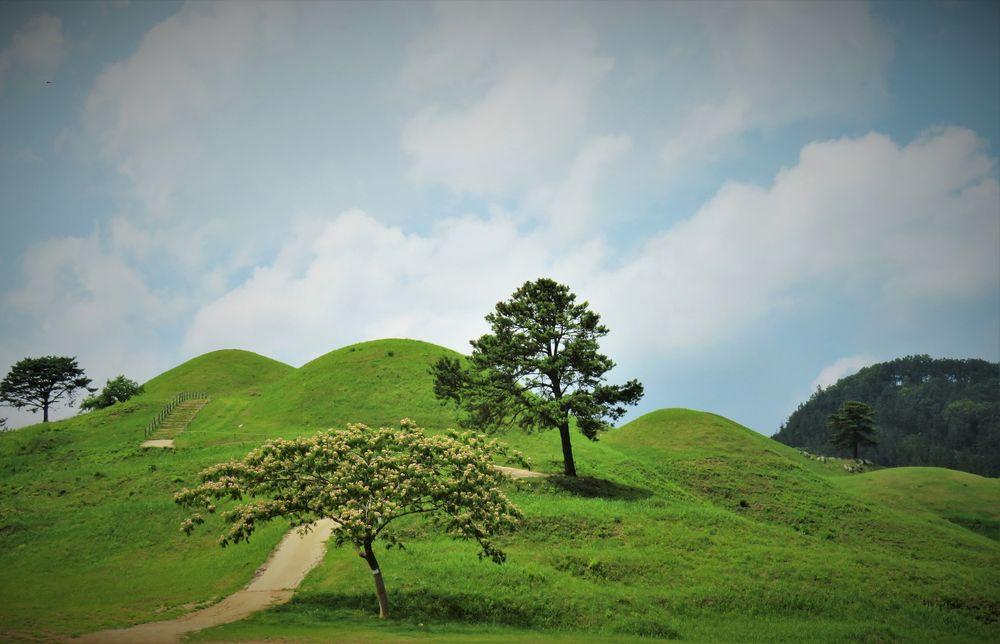
Group of nobleman’s burials from the Daegaya period, built in the 4th – 6th century AD. Thus far are known 704 burials with diverse designs.
Osang-ri dolmens
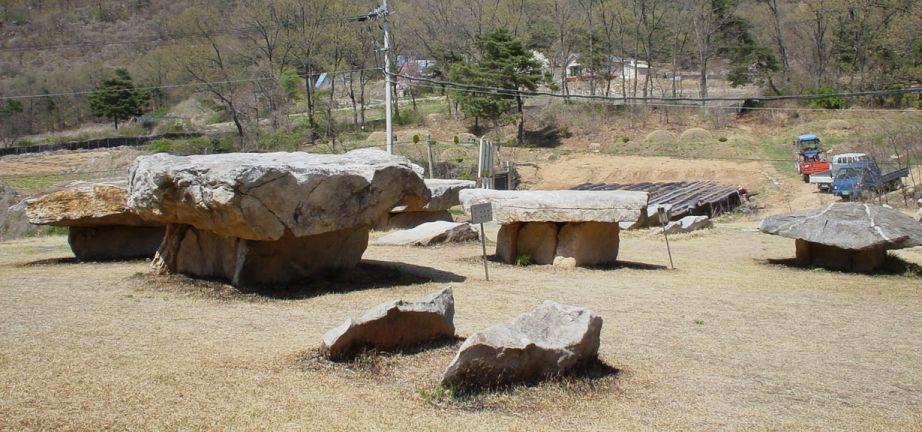
Group of 12 dolmens on Ganghwa Island. Six of these dolmens were rebuilt when the site was listed as UNESCO World Heritage Site.
Petroglyphs in Cheonjeon-ri
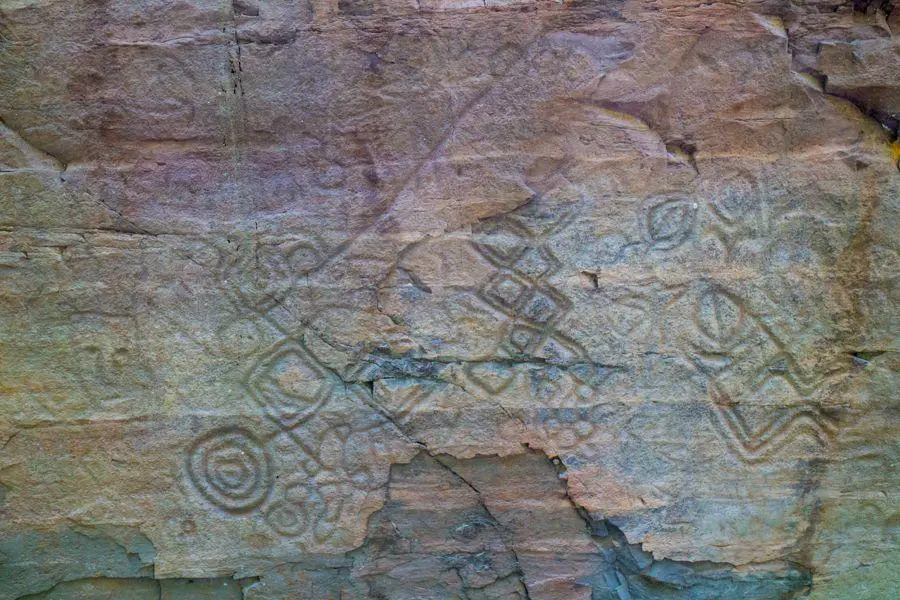
A sacred site throughout millenia. Groups of rock art, engraved in the cliffs along Daegokcheon Stream. Most petroglyphs were made in the late Neolithic – Bronze Ages, but also the intellectuals of Joseon Period (the 14th – 20th century) have left engravings here.
Gold Crown Tomb (Geumgwanchong)
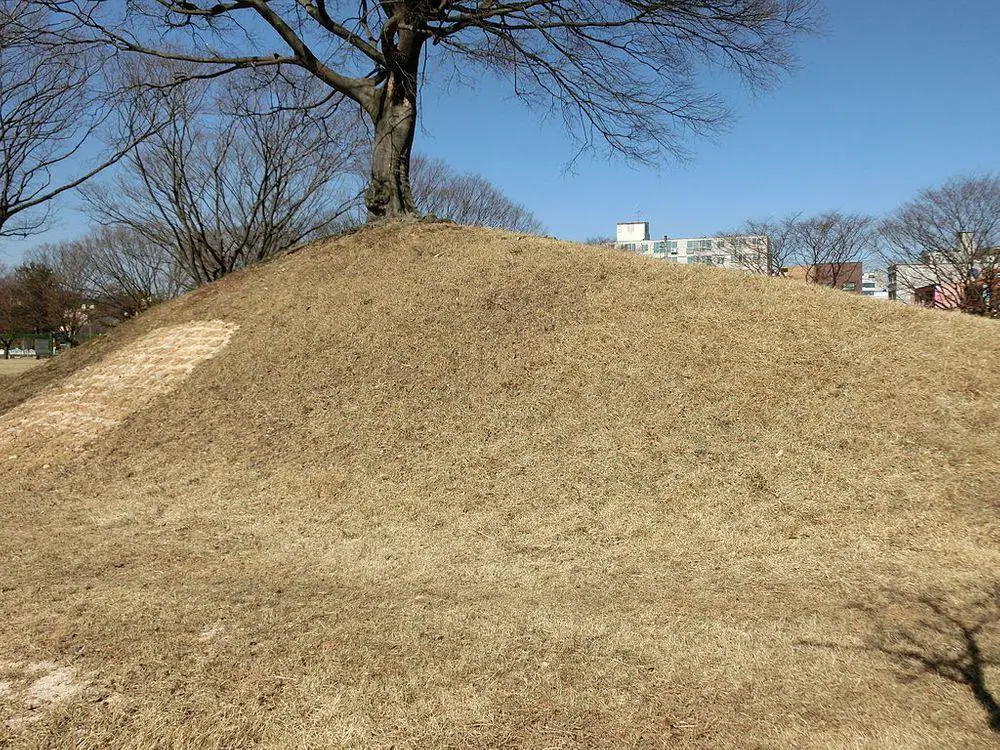
One of the Royal tombs of Gyeongju – large tumulus that was built in the 5th or 6th century AD. This tomb was very rich with treasures including very ornate golden crowns of Silla Kings. More than 40,000 artifacts have been recovered from this tomb – mostly jewelry and other precious items.
Gimhae tumuli (Daeseong-dong tumuli)
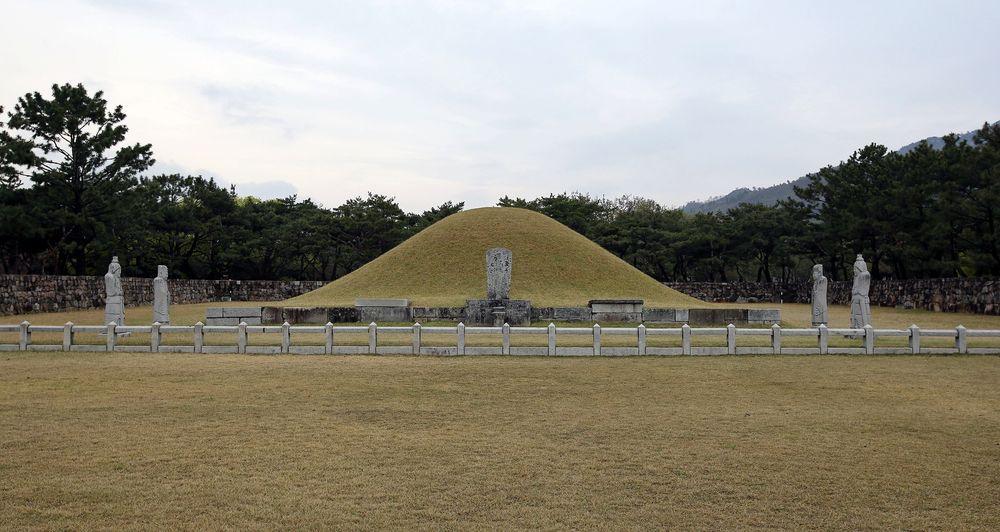
Necropolis of the kings and noblemen of Gaya state. Site contains diverse burials, most were made in the late 3rd – early 5th century AD.
Donggureung Royal Tombs
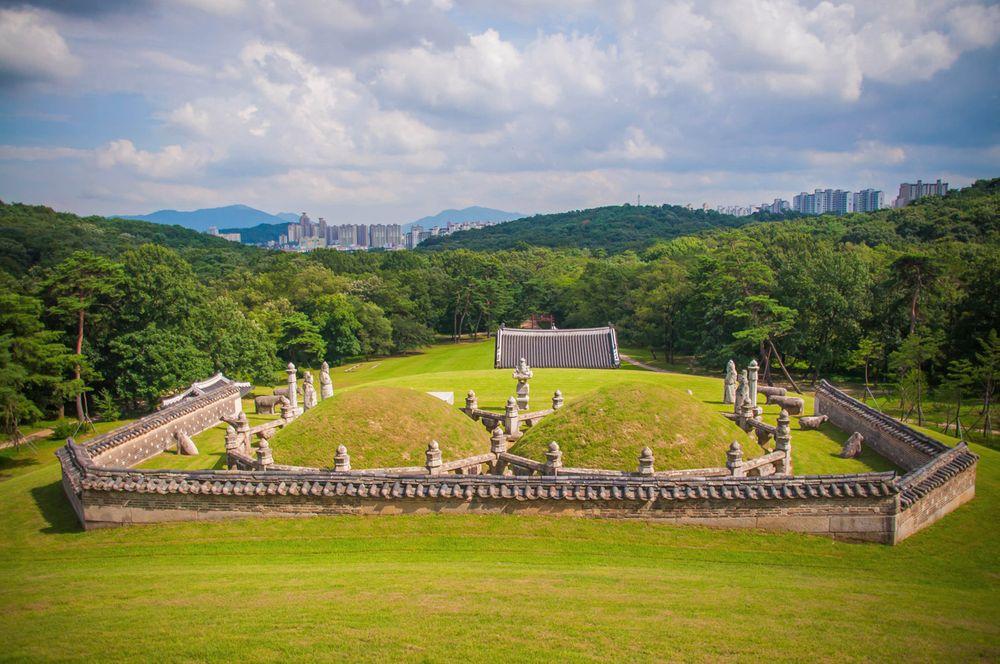
The most impressive royal tombs of Joseon Dynasty. This group consists of nine tombs where 7 kings and 10 queens have been buried in the 15th – 19th century. In Geonwolleung tomb has been buried King Taejo – the first king in this dynasty.
Cheonmachong
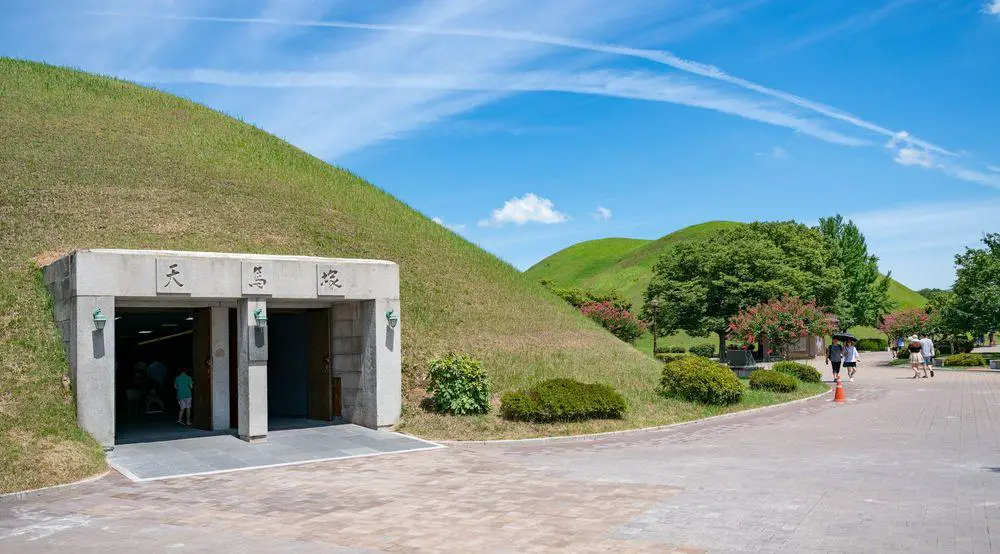
One of the Royal tombs of Gyeongju – large tumulus that was built in the 5th or 6th century AD. This 12.7 m tall artificial hill has a wood-lined passage in it. 11,500 artifacts have been recovered from this tomb. The tomb contained an interesting drawing of so-called "Korean Pegasus" – a horse with eight legs.
Hwasun Dolmens
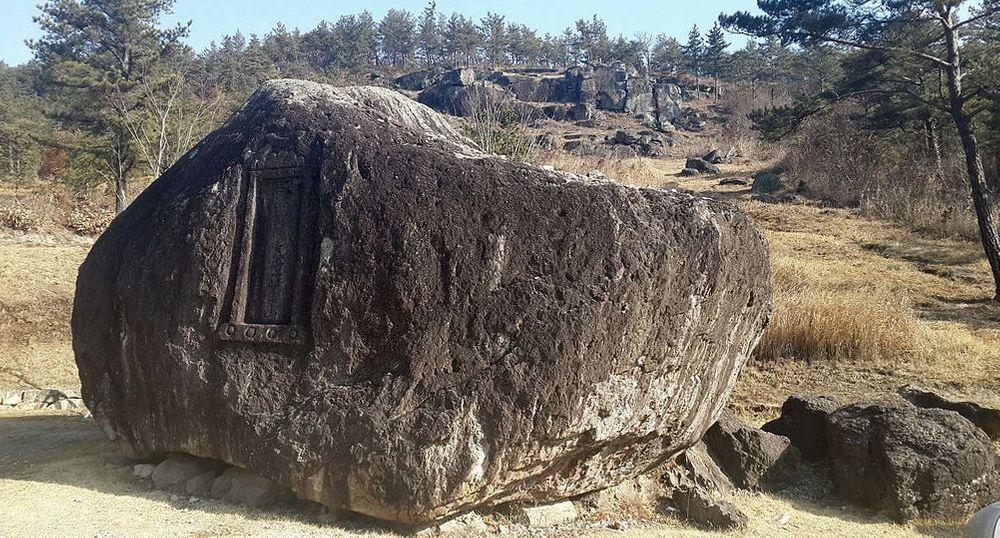
Group of diverse dolmens and other megaliths, in total – 596. Created around the 6th – 5th centuries BC.
